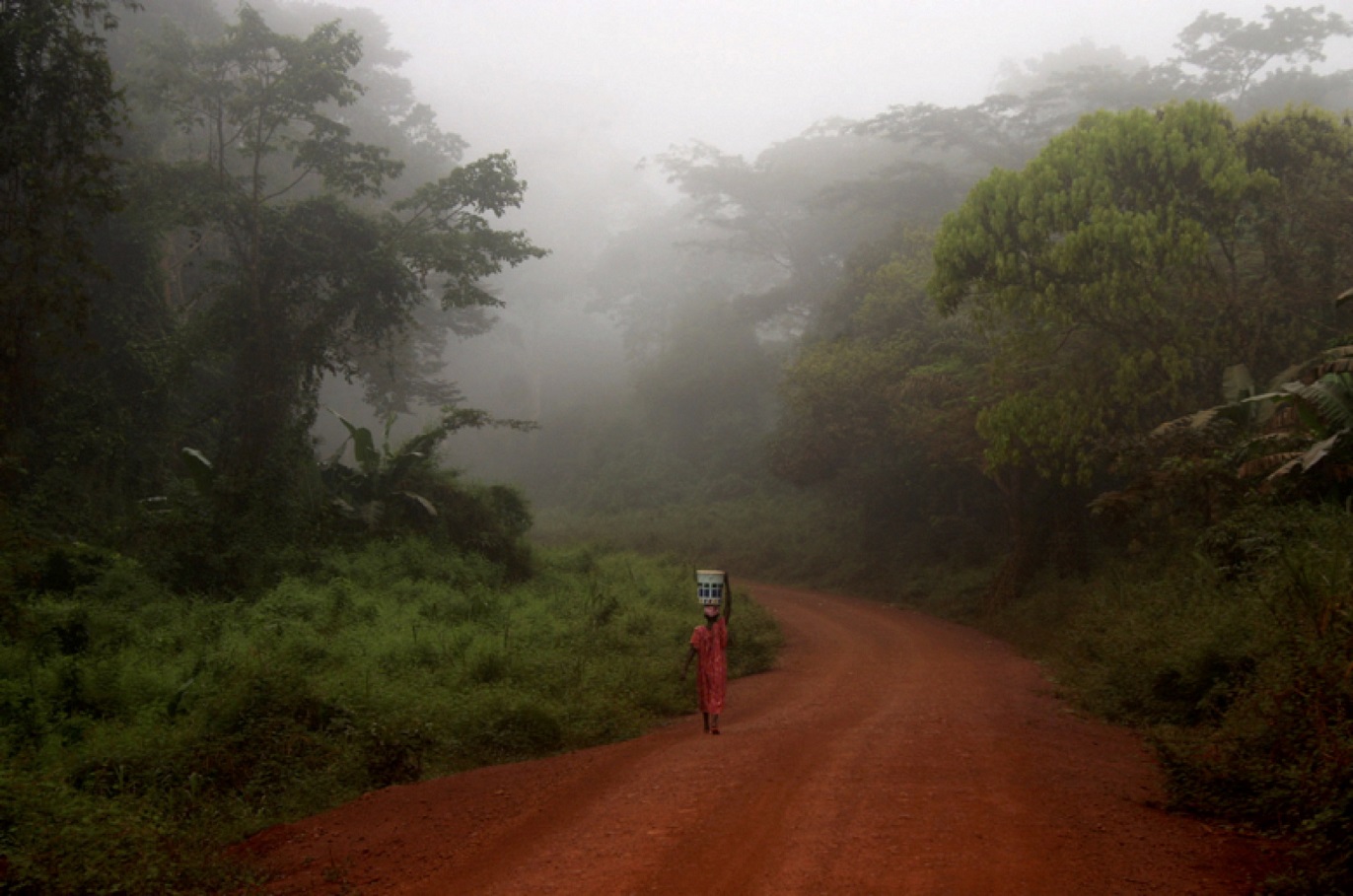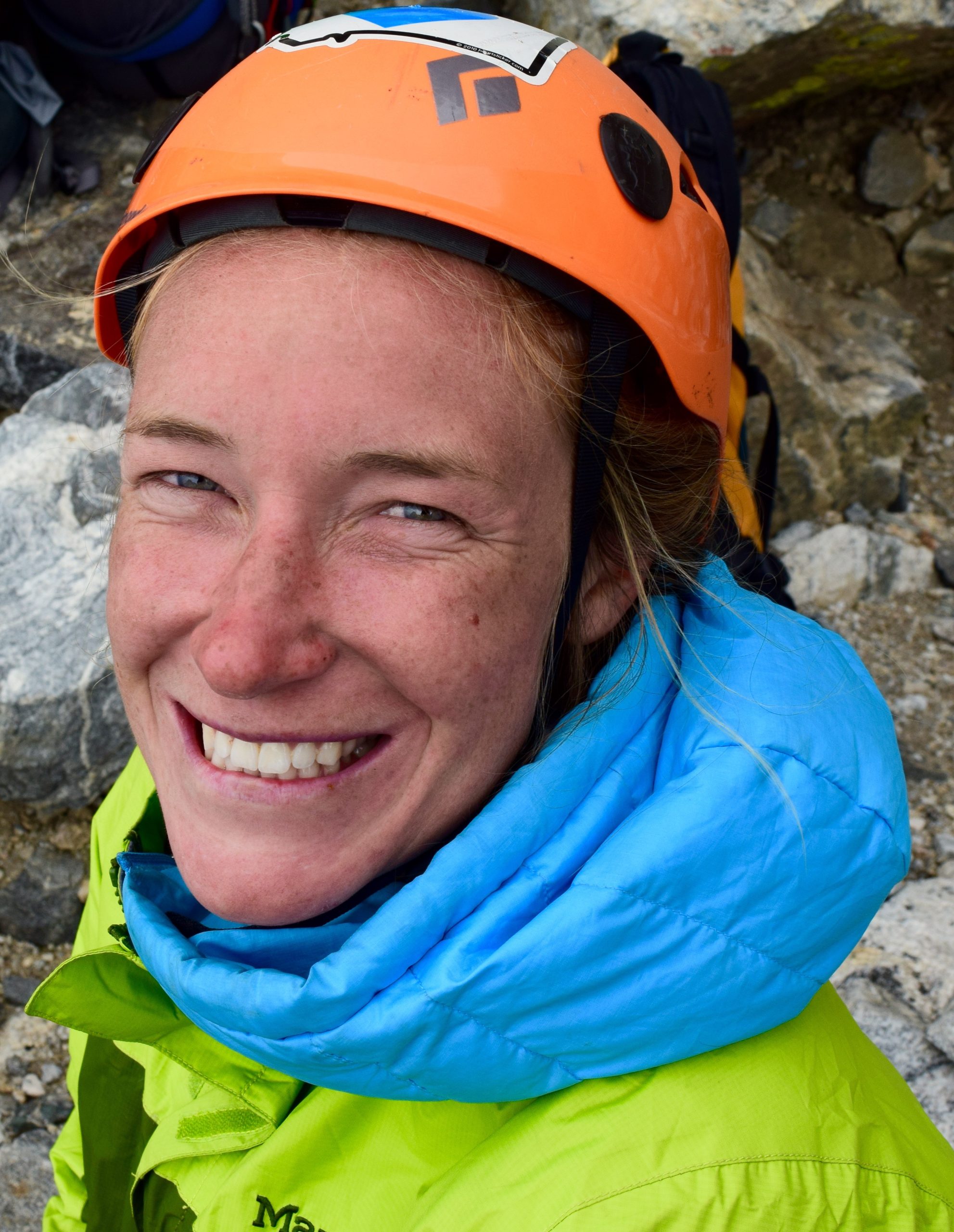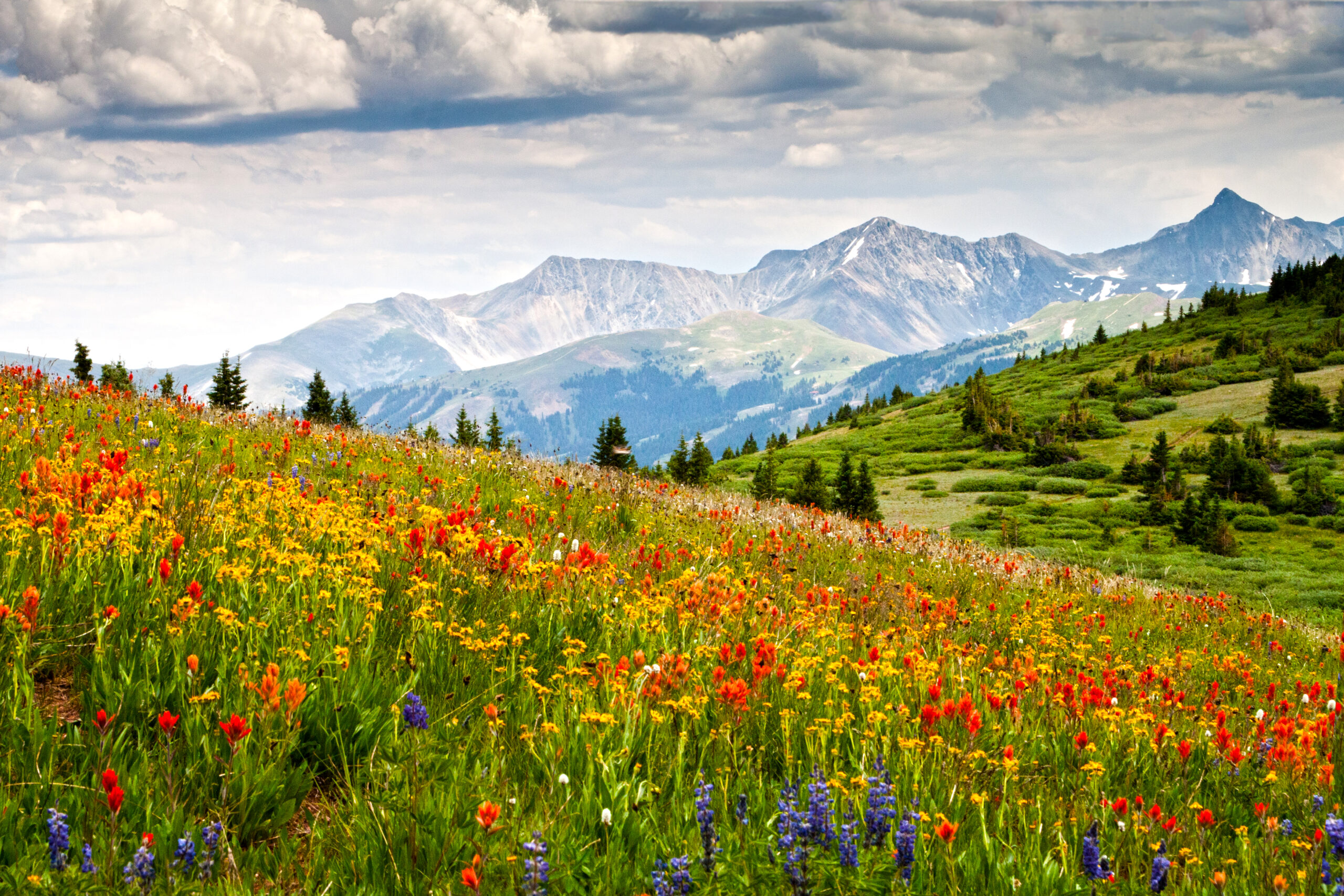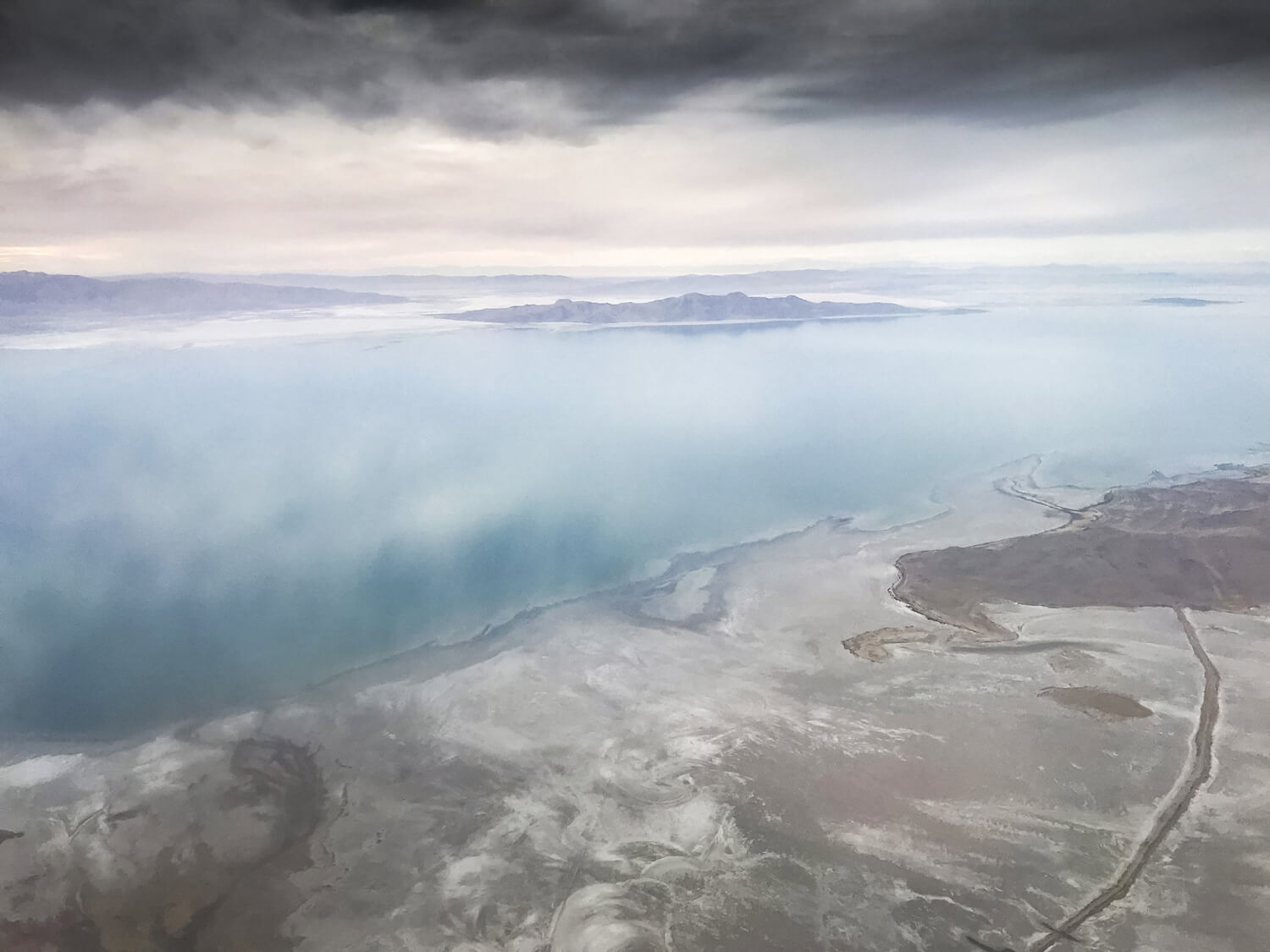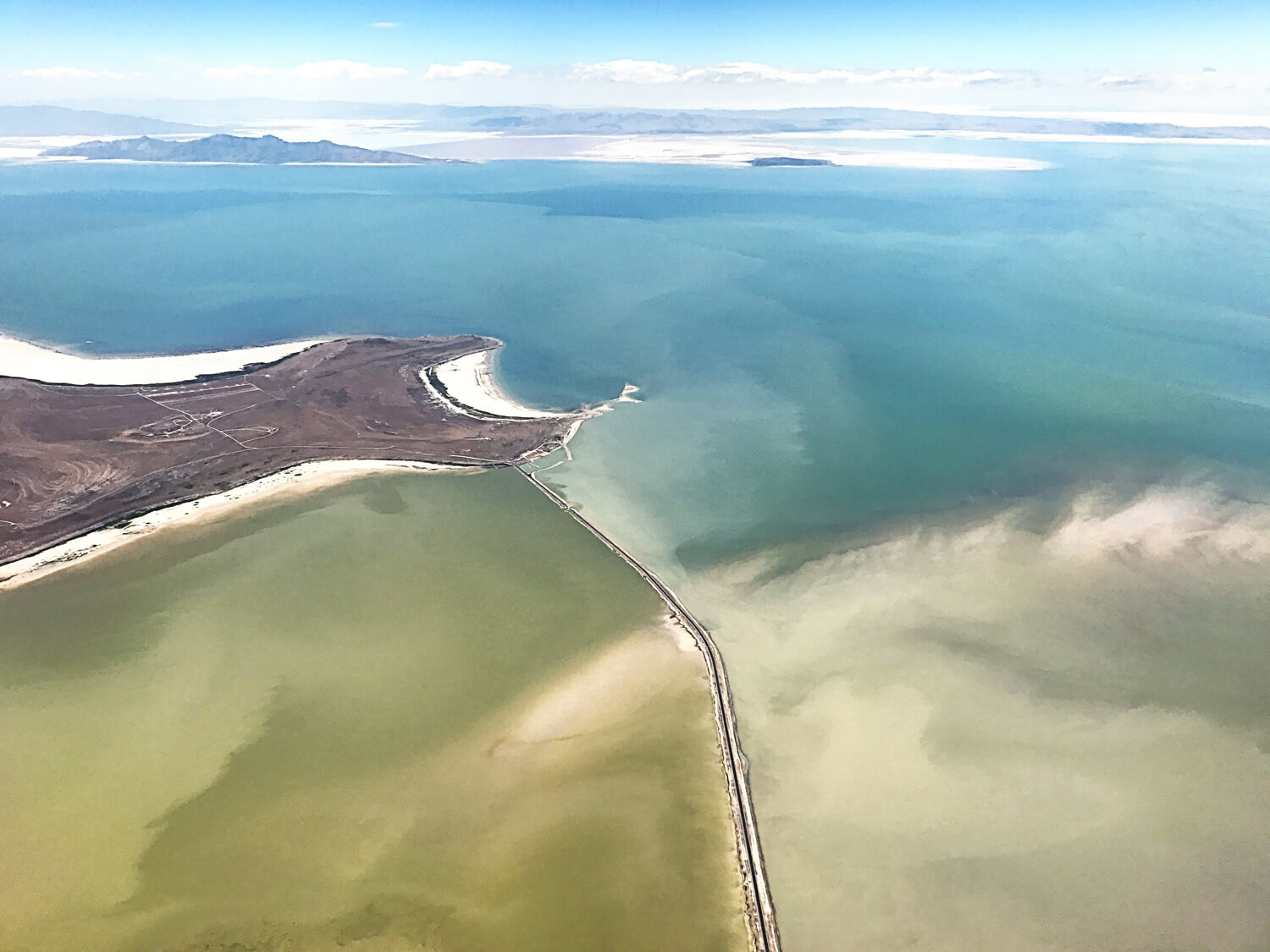I first heard about REDD+ in 2010, while finishing undergraduate research on natural resource management and indigenous tenure rights in remote southeastern Cameroon. The site of my research, the Mobilong Mining Concession, abounds in old-growth forest on top of the land and valuable mineral deposits below it. My conclusions were predictably sad: Secrecy and corruption seemed to cloud any coherent natural resource management strategy by the country, and the remoteness of the region, paired with its wealth in wood, minerals, and ivory, meant that local and indigenous forest communities stood to lose the most. In particular I was grappling with my conclusion: Where property rights were not clearly defined, enforced, or respected, the government of Cameroon had no incentive to conserve its forests, nor the livelihoods of the people who lived in them.
Then, I heard about REDD+, a United Nations-created mechanism for “reducing emissions from deforestation and forest degradation.” REDD+ is essentially an international carbon-mitigation scheme that provides monetary incentives to countries for their efforts to conserve forests and the carbon stored within them. I was relieved. I could conclude my undergraduate thesis on a hopeful note, because REDD+, at least in my mind, held promise for the indigenous communities I interviewed and worked with in Cameroon.
An increasing emphasis on mining activities in Cameroon set the stage for my research. In 2007, three years before my visit to the country, the national government awarded the majority Korean-owned company C&K Mining an exploratory mining concession over a 25-million-square-kilometer area—roughly the same size as the state of Minnesota.1 This Mobilong Mining Concession lies in the Congo Basin, home to contiguous forest teeming with more than 10,000 species of plants. The basin also supports more than 400 species of mammals—including endangered forest elephants and lowland gorillas—1,000 species of birds, and 700 species of fish.2 While my research was independent, it was entirely made possible thanks to the help of RELUFA and CEFAID, two Cameroonian civil society non-governmental organizations (NGOs) that are committed to equity in natural resource management. They not only sparked my interest in traveling to the Mobilong Mining Concession but also set me up with the contacts, translators, and transportation I relied upon in the field.
After pouring over legal codes, C&K Mining’s impact study, and related articles, I was ready for the field—and intrigued by the wildness of southeastern Cameroon. On my way there, the semi-savannah landscape gave way to a forest so thick I could hardly see the sky. Twelve hours of jarring clay-red roads later, I was in Yokadouma, the provincial capital of Cameroon’s Southeast. Thanks to CEFAID, I was able to hit the ground running. My first week in the town, I interviewed government officials and staff from the international conservation NGO World Wildlife Fund (WWF), and I accompanied a film crew that was documenting illegal logging in the region. We also visited and interviewed rural Baka camps and Bantu communities to learn about the relationships between these local peoples and more recent arrivals to the area, including timber companies and conservation groups.
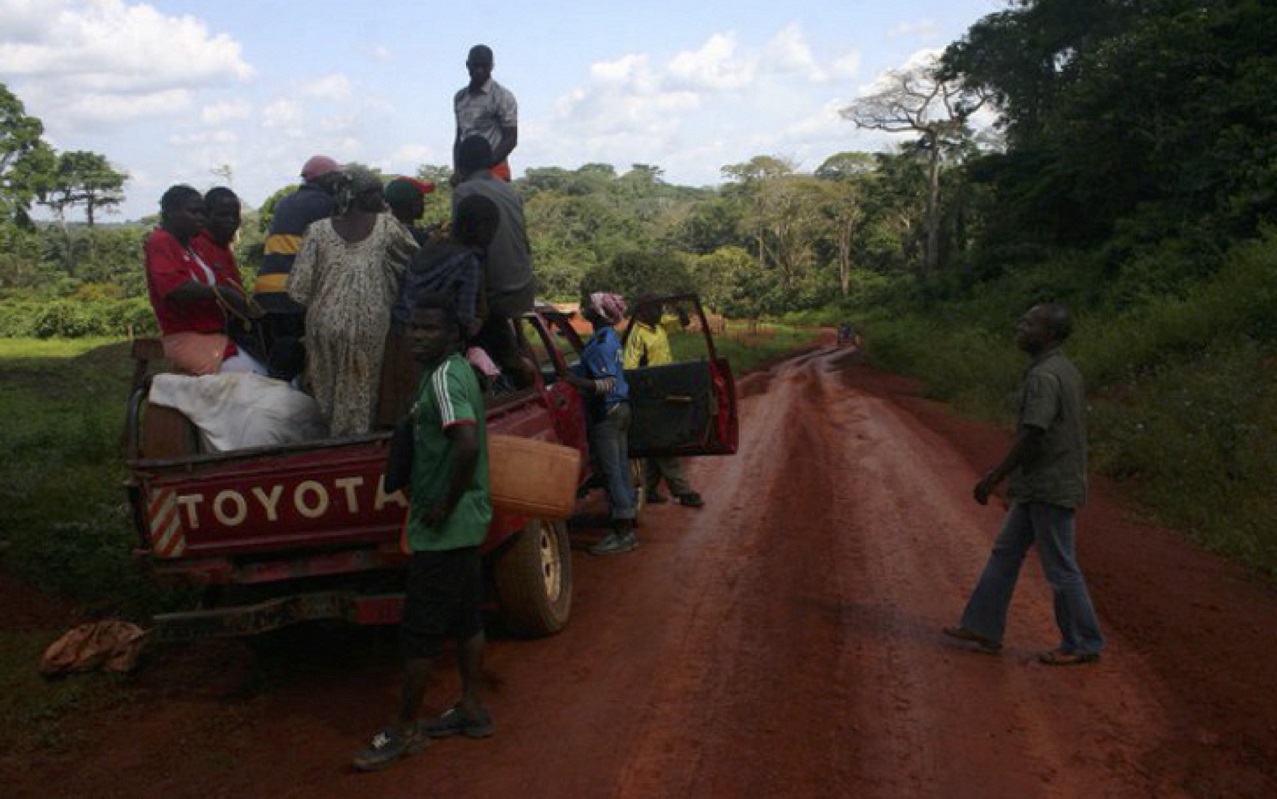
After a week in the provincial capital, I made my way to the Mobilong site. I remember waiting all day for a truck to fill up with enough people to justify the drive to Mboy I, a village that borders the mining concession. When the pickup truck was what I considered full, I hopped in, and everyone laughed. Another 10 passengers later, and our Toyota was sufficiently full to head to Mboy I.
The Mobilong Concession Site
The exploratory concession held by C&K Mining is named for the river Mobilong, which passes through the permit site and is wealthy in both alluvial and conglomerate diamond deposits. The 2007 exploratory concession superimposed an already complex landscape with various stakeholders and legal frameworks. These included three existing forest-exploitation concessions to French and Italian timber outfits, a community hunting zone, a sport hunting zone, and a community forest where the Cameroonian government had conveyed exclusive rights over to local communities, for their private use. Those demarcations and rights, however, appeared to exist on paper alone. The entire Mobilong area also lies within the Sangha Tri-National Landscape, designated for priority forest elephant and gorilla conservation. Furthermore, semi-nomadic indigenous peoples inhabit and hunt the entire concession, as they have done for centuries. By law, each of these entities has a legal right to its forest concession. In terms of legal application or practical interaction with customary law, however, these rights are usually only respected and applied where the government sees clear profit incentives for itself.
In Mboy I, I stayed with an artisanal miner who did geological surveying for C&K Mining. He translated for me during Baka interviews, transported me around the Congo Basin on the back of his motorcycle, and welcomed me into his family during my stay. While in Mboy I, we conducted as many surveys, focus groups, and interviews as time and the heat would allow. We spoke with indigenous Baka and Bantu communities, surveyed other artisanal miners, and interviewed representatives from the government, WWF, timber companies, and villages of the designated community forest and hunting zones. Several themes emerged from my research, each providing powerful lessons for land-use and conservation projects, including REDD+.
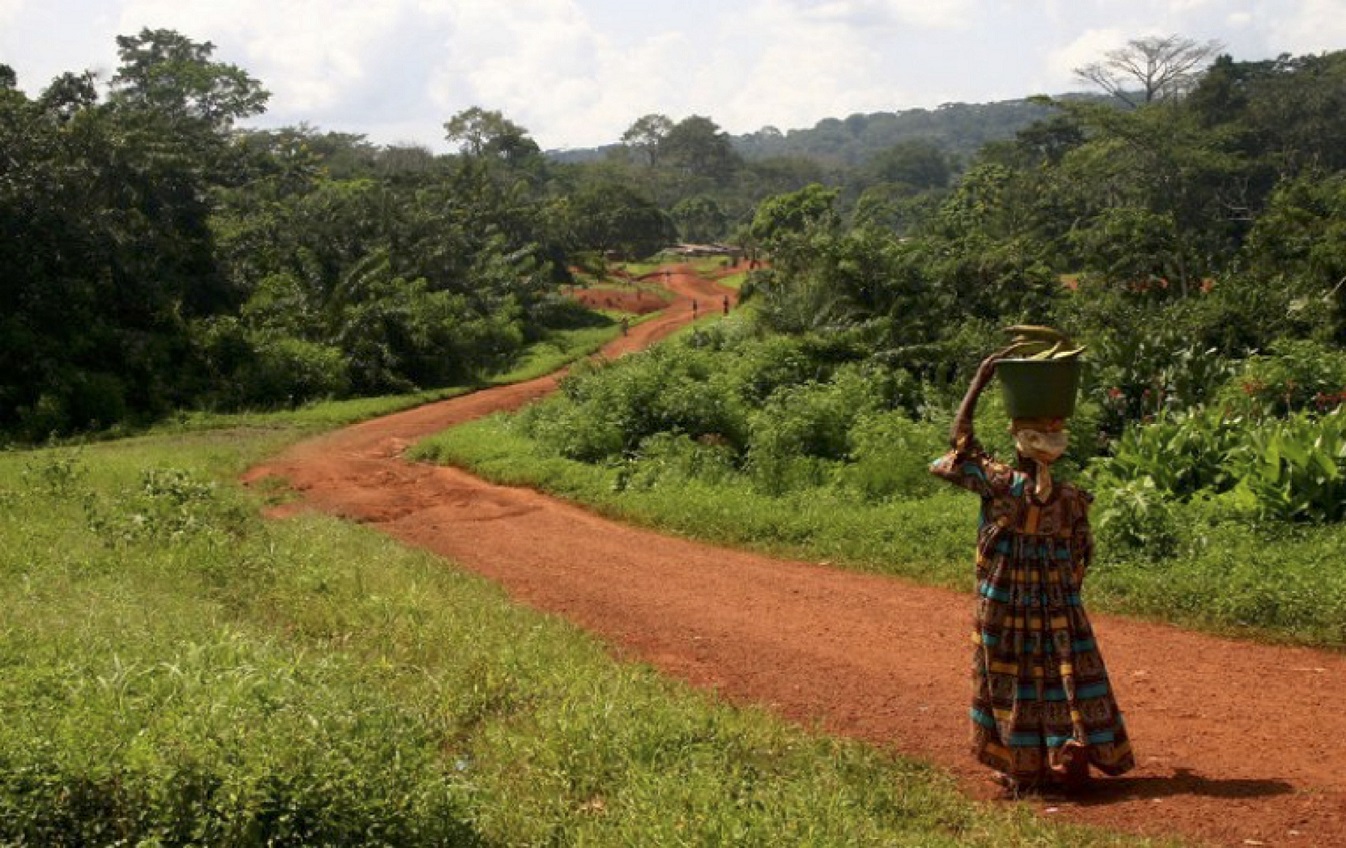
The Cameroonian state is committed to developing its mineral resources despite conflicts over existing rights to those resources. The country has issued mining permits for approximately one-fifth of its total land area, 85 percent of which overlap with forested areas—and 40 percent of such concessions overlap with lands that the government has designated to remain forested in perpetuity.3 The map speaks for itself: Cameroon’s commitment to the mining sector overshadows forestry, hunting, conservation, local community development, and indigenous-tenure rights.
Conservation initiatives in particular cannot compete with the promised rewards from the mineral sector; therefore, they lack true government commitment. In addition to hunting, “industrial activities; extraction of minerals; and pollution of all kinds” are illegal in national parks.4 Yet the government has violated its own domestic laws and permitted nine mining concessions that overlap national parks, including five that overlap Lobeke National Park.5 According to the WWF representative I spoke with in Yokadouma, the entire future of conservation in Cameroon is unclear and vulnerable to mining pressures.
Furthermore, the lack of security and clarity in forest-resource rights benefits Cameroonian government officials, while rendering collaborative management of forests impossible. The confusion and conflict exists on several levels: Legal frameworks are contradictory, application of the law is sporadic and unequal, and statutory law invalidates customary law where the two frameworks conflict—even though most rural areas in Cameroon follow customary law. The upshot is that the Cameroonian government can systematically repudiate customarily held tenure rights and legally concession off ancestral indigenous lands. Neither indigenous and local communities nor private sector companies are consulted in natural resource decision-making processes.
A report by WWF on Cameroon’s tenure laws released in 2012 explains that when it comes to “the general rules of legal interpretation in the case of contradicting sectoral laws (e.g. forestry and wildlife with mining), the most recent law takes precedent (in this case the mining code).” As a result, the “Cameroonian government has granted exclusive or semi-exclusive rights to one piece of land to multiple foreign investors for conflicting purposes.”6 Today, exclusive or semi-exclusive rights are no longer clear or secure. The government consistently takes advantage of the lack of clarity in natural resource rights to form non-transparent contracts with private companies, in conflict with existing industrial contracts or granted rights.
How did timber concessionaires feel about the superimposition of mining concessions over their contractually leased forests? I visited the forest headquarters of French-owned timber company Thanry to find out. Riding on the back of a motorcycle, I emerged from dense forest into a massive clearing that had a sawmill and mountain of pulp at its center, with offices, machinery, and a boom town of sorts surrounding it.
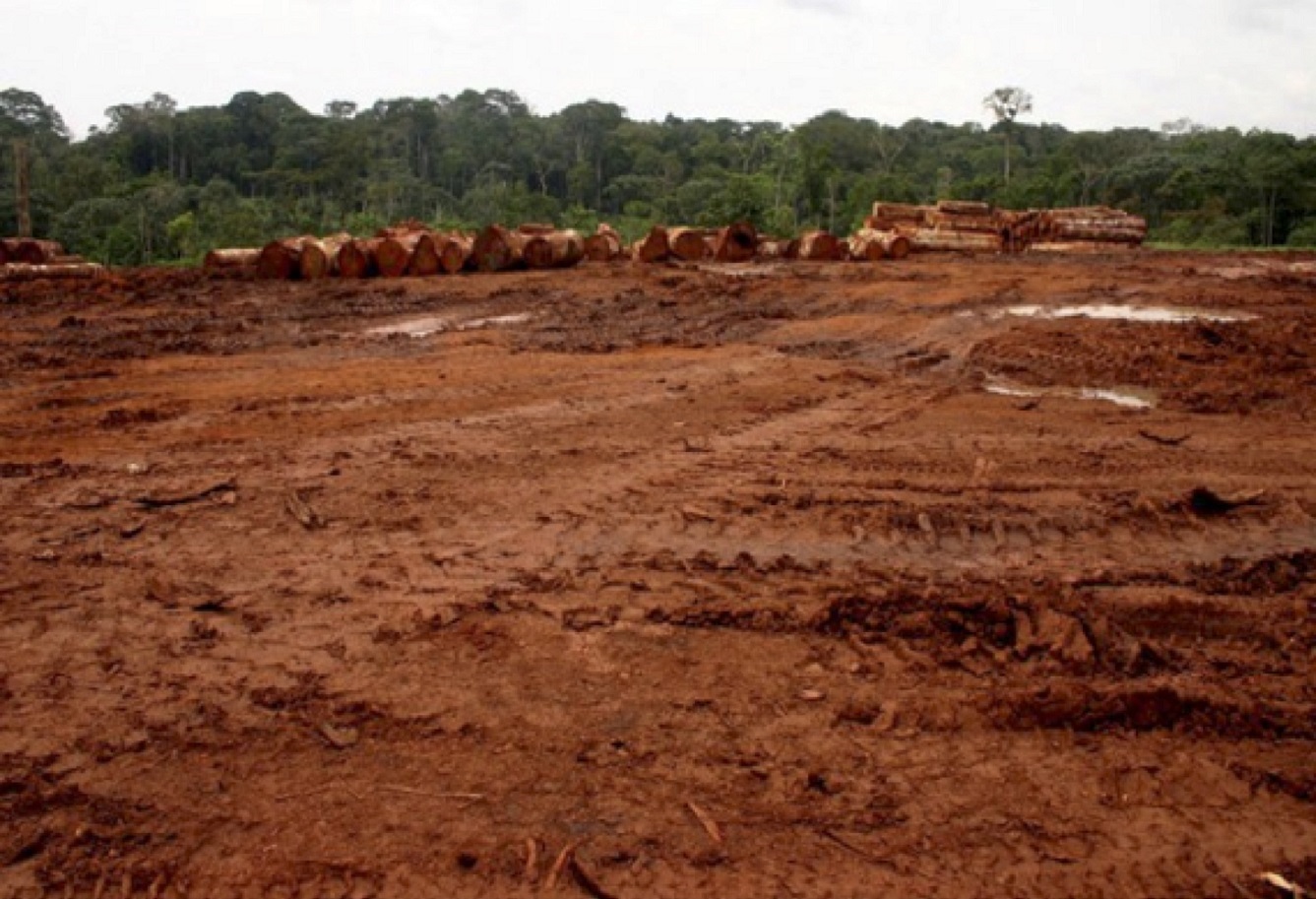
The first thing I noticed when entering the company office was a 4-inch binder titled, “Forest-Mines Plan/Conflict.” A company representative told me that no one informed them of the new mining concession now overlapping their forest concession. Instead, company foresters found C&K Mining selling trees on the timber concession. The company rep went on to explain: “The law is clear. The forest concessions are classified, but now, there is a new law that dictates a new way of things.
“We have so many problems with the government,” he continued. “There is no information, and the government gives two permits for the same space, but doesn’t stop to think how that is supposed to fairly work.” Thanry told me that it was considering suing the Cameroonian government, or simply leaving the country and cutting its losses, yet it continues to operate today, suggesting that the company found a way to negotiate a profitable continued existence. Stakeholders with less bargaining power in southeastern Cameroon, however, have been less fortunate.
Unfulfilled Promises
One of the saddest lessons I learned, as well as the one most applicable to the implementation of REDD+, was that benefit-sharing mechanisms in natural resource extraction were not benefitting local peoples in Cameroon. Local communities do not monetarily benefit from resource-extraction concessions. Instead, communities that border or live within resource-extraction sites—primarily Baka and Bantu communities—bear the costs of such activity without reaping any of the benefits, a powerful lesson for REDD+ policymakers to consider.
Throughout my research, I had the opportunity to see that reference to written statutes is more lip service than reality in Cameroon’s southeastern forests. The Forest Code of 1994 requires private forestry companies to pay a value tax for every hectare of forest cut, 10 percent of which is mandated to be invested in community-determined development projects for local peoples affected by logging operations.7 While a representative for the French-owned forest concessionaire told me that he paid the equivalent of nearly half a million dollars in value-tax obligations to the Cameroonian government annually, the local Bantu and indigenous Baka communities bordering the concession have not meaningfully benefitted from the payments.
The village of Parni, located only 7 kilometers from the provincial capital of Yokadouma, showed me a three-year-old unfinished reunion hall. The half-completed brick structure with corrugated tin roofing reportedly cost Parni $16,000, three years of its annual forest royalty. Parni’s chief said that the village asked for a classroom but instead got an unfinished reunion hall. “The government is poorly organized,” he explained. He claimed that both provincial and local value-tax payments were given “to the mayor, but the mayor poses many problems … many problems for us. He has the opportunity to use the two sums how he pleases.” When I asked the Yokadouma mayor himself about his role, he denied receiving royalty money but confirmed that communities surrounding forest concessions had not benefitted from resource extraction.
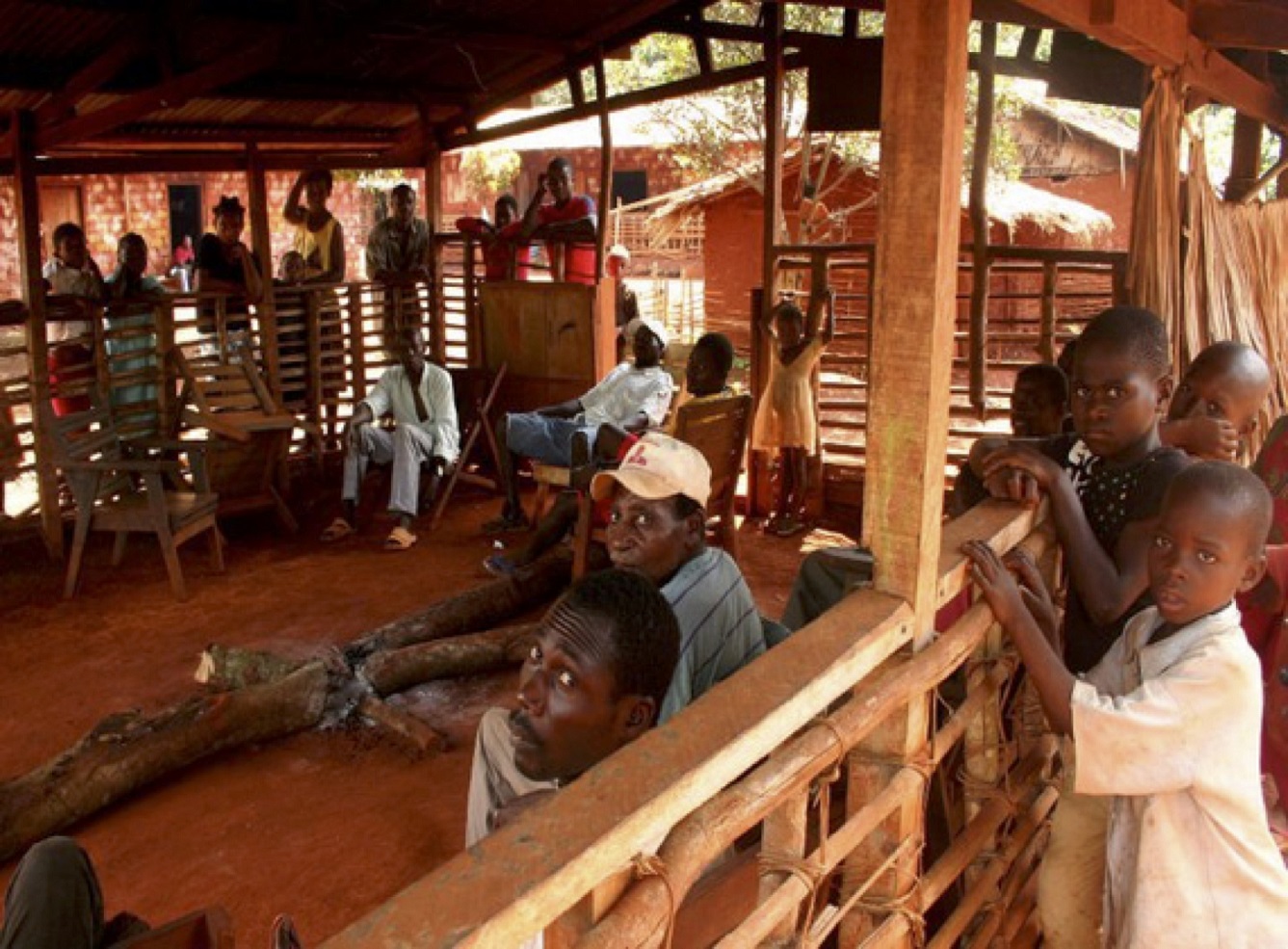
The forest code similarly requires commercial hunting outfits to pay a value tax for land use and animal-specimen removal. As with forestry, 10 percent of the tax is legally designed to help local communities fund development projects. When I met with the Mboy I delegate, he was concerned that as wildlife habitat was lost to commercial logging and mining, his community, would lose access to hunting funds. Upon further inquiry, however, I learned that the community had never received such funds—the hunting program was yet another failed benefit-sharing mechanism, prophetic of potential future mismanagement if REDD+ projects rely on similar tax systems.
The Baka, the forests, and a time-honored way of life
The nomadic Baka Pygmies are the oldest inhabitants of Cameroon’s forests, and in many ways, they are still practicing the same lifestyle they have led for centuries.8 They also stand to lose the most from resource-extraction and conservation projects in southeastern Cameroon, REDD+ included. Their vulnerability increases where tenure rights to their ancestral lands are not codifed or respected.
Baka living in the forests of southeastern Cameroon are thought to number around 40,000.9 And even though the Cameroonian government follows a sedentarization policy that increasingly relocates Baka camps closer to roads, it has not changed the Baka relationship to the forest. Communities still walk into the forests daily, and they periodically leave their camps for months at a time to practice spiritual forest rituals.10 Because Komba, the Baka forest god, makes the land and forest available to the people, the notion of land and forest ownership does not exist in the group’s culture.
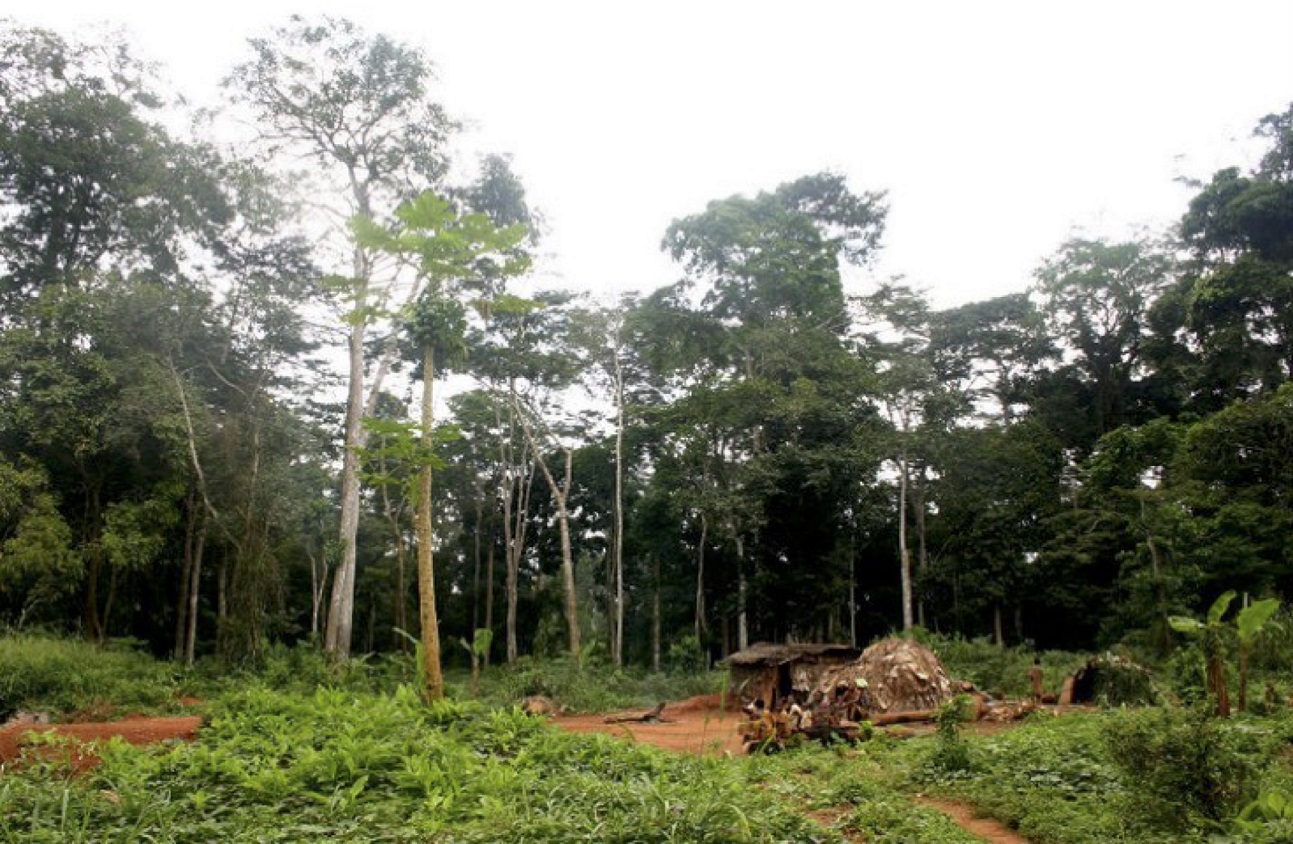
Following the Rio Earth Summit in 1992, Cameroon set an agenda to classify 30 percent of its Permanent Forest Estate as protected areas.11 While Cameroon set the target, international conservation organizations, including the WWF, played central roles in helping establish and manage such protected areas in the region. The WWF in particular claims that it “will not promote or support, and may actively oppose, interventions which have not yet received the prior, free and informed consent of affected indigenous communities, and/or would adversely impact- directly or indirectly- the environment of indigenous peoples’ territories, and/or would affect their rights,” including through the creation of protected areas.12
The laws governing tenure in southeastern Cameroon respect indigenous tenure rights on paper, but they have zoned these rights to areas that Baka do not inhabit, mostly along partially cleared roadside corridors that lie beyond protected areas. The indigenous Baka and even localized Bantu still live and hunt within priority conservation areas, including Lobeke National Park, south of the Mobilong site. Southeast Cameroon is home to perhaps 2,000 endangered forest elephants, most of them in Lobeke and Nki National Parks.13 Given that indigenous groups’ tenure rights are not recognized or respected, they are further marginalized and can be forced into illicit sectors, including poaching. Meanwhile, since payments to the Cameroonian state from the logging and mining sectors dwarf those from conservation initiatives, the state is only superficially committed meaningful conservation.
During my research I conducted focus groups in both Bantu and Baka communities, a challenging proposition given language and cultural gaps. When I asked, “Who are the WWF? What is their role? And what is your relationship with them?” it caused a commotion. From Bantu communities, I mostly heard that interactions with the WWF included representatives telling villagers, or simply posting signs, that they could no longer hunt in specific places or for specific species in the name of conservation. The Baka focus groups revealed similar allegations. They corroborated having seen WWF posters and also claimed that members had been arrested for selling bush meat, though they did not understand why the arrests were made. The Baka villagers I interviewed had no concept of trespass or why they could no longer hunt certain species or go to certain places in their ancestral forests.
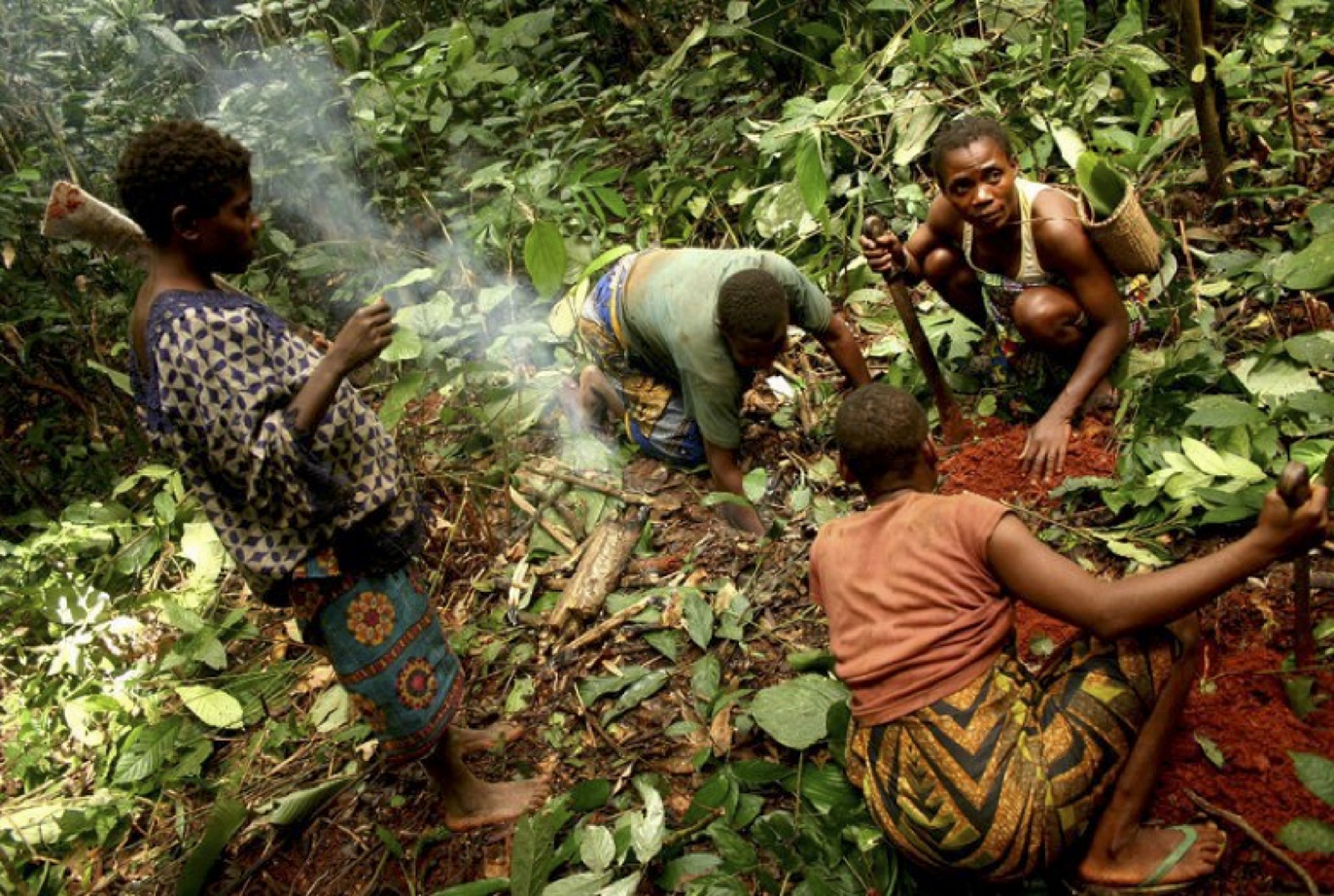
Two main considerations hampered WWF’s commitment to local participation, and they have powerful implications for REDD+ prospects. First, the WWF, like REDD+, values host-country ownership of conservation projects. The only WWF representatives I interacted with in the field were Cameroonian, and, in particular, Bantu. The Bantu, however, have a history of discriminating against their indigenous Baka neighbors. Second, and most importantly in the context of REDD+ safeguards, many of the principles outlined by the WWF refer to indigenous rights, which are not meaningfully recognized or protected by Cameroonian law. If REDD+ projects depend on rights that are protected on paper only, then they could end up perpetuating the same negative consequences as previous conservation efforts in southeastern Cameroon.
Conclusion
No stakeholders are as vulnerable to the expropriation of forested lands in Cameroon—whether for mineral, timber, or conservation purposes—as local and indigenous peoples. But there are fewer and fewer forested areas where they can retreat. The government has strategically zoned Baka rights to areas lacking forests, areas they have not traditionally inhabited. They are increasingly refugees within their own country.
The forest is central to Baka existence. When asked whether the Baka could survive without their forest, the focus group was confused by the abstract nature of my question. Live without the forest? What else was there?
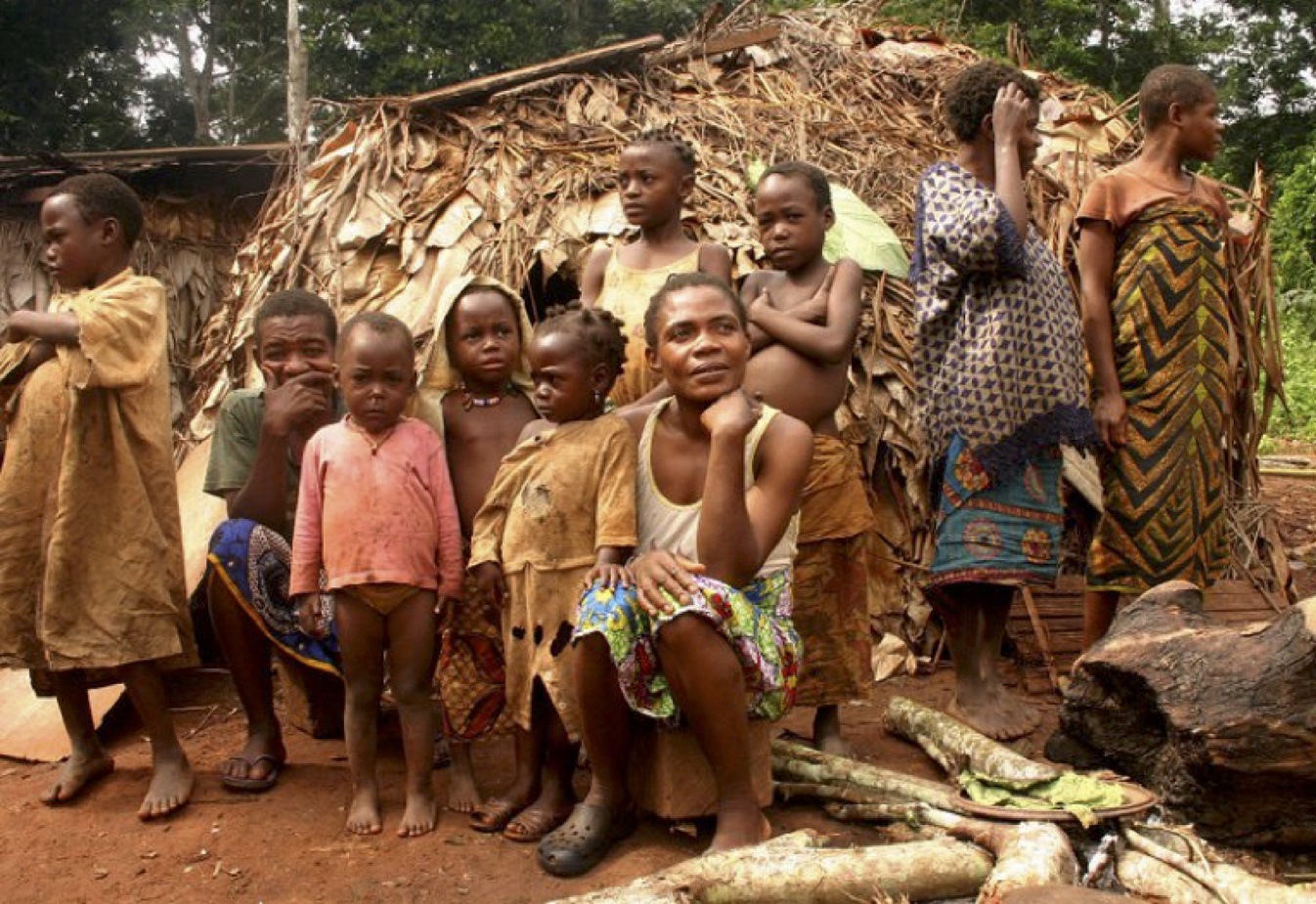
The experience of Cameroon is of utmost importance to REDD+ projects, especially where they concern failed attempts at implementing benefit-sharing programs and human-rights based development. While REDD+ has the opportunity to help conserve ancestral forests and the continuation of the Baka culture, without an understanding of Cameroon’s tenure laws and application, such projects will likely continue the trend of marginalization. Furthermore, without consideration and collaboration with the mining sector, conservation projects like REDD+ will likely be eclipsed by the government’s drive to develop the mineral sector in Cameroon’s southeastern forests.
The Baka I talked to told me they wanted access to education and hospital care, but that if forced to live in Bantu villages, they would simply leave, and walk into the forest to carry out their traditional practices. When asked what they would do if the forest was cut down, they laughed, saying the forest is vast. If a section was cut, they would just travel to another section. Surely no one could cut down such a vast forest.
Notes
1 “Monitoring Local Content and Fiscal Obligations of Mining Companies in Cameroon: Case of the Diamond Mining Project of Cameroon and Korea Mining Incorporation Mobilong, East Cameroon.” RELUFA and CED, October, 2013.
2 World Wildlife Fund. Congo Basin.
